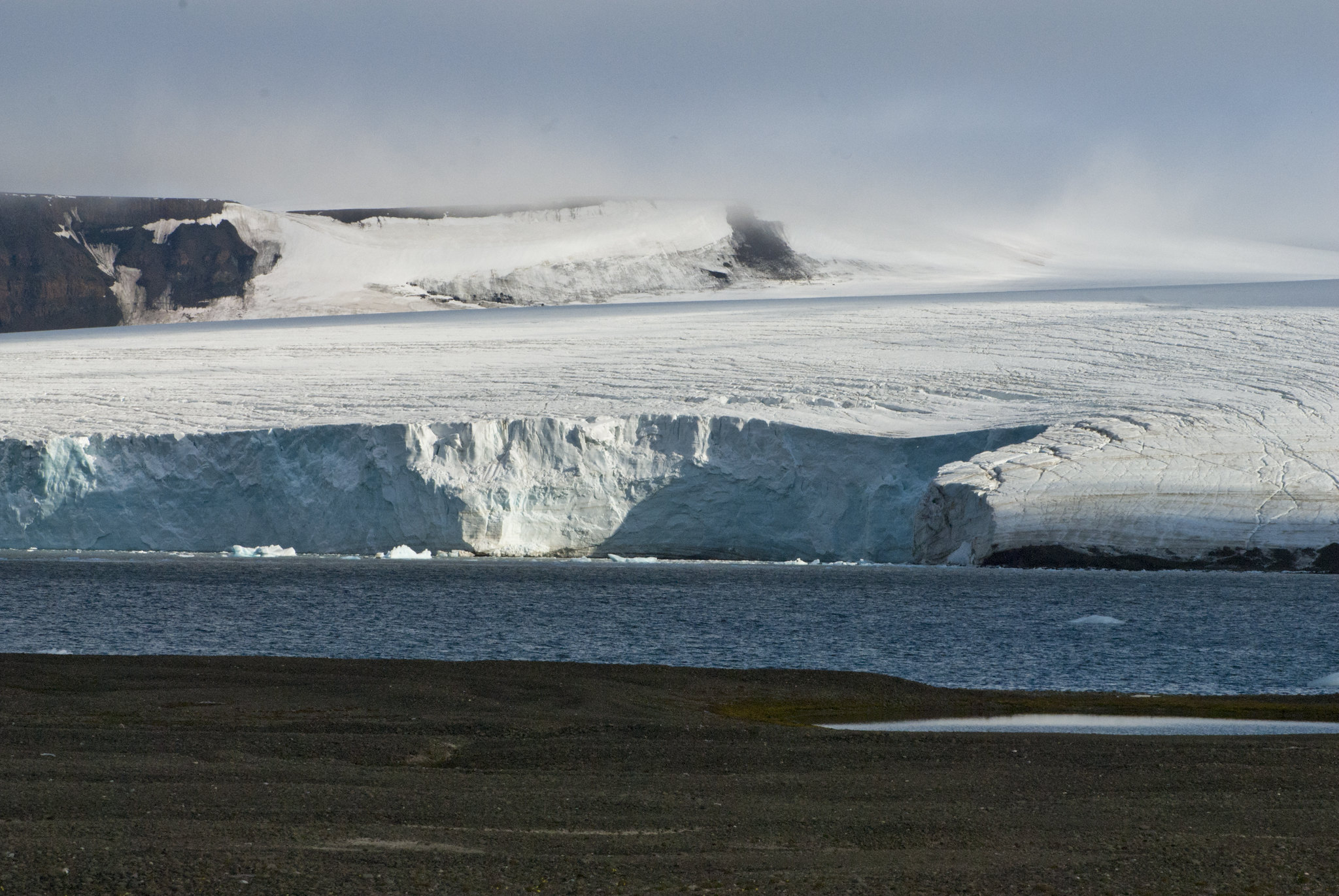A new analysis finds melting at Russian Arctic glaciers is speeding up
The glaciers in Russia's high Arctic lost twice as much mass from 2010 to 2017 as they did in the previous decade.

Until recently, glaciers sprawling over three separate archipelagos in Russia’s High Arctic have remained more protected and intact than the faster-melting glaciers in subarctic Alaska and similar locations.
But now, the melt of those Russian Arctic glaciers is speeding up too, according to a new study by German and Russian scientists.
Mass loss in the 2010-2017 period of glaciers in Novaya Zemlya, Severnaya Zemlya, and Franz Josef Land was twice that in the previous decade, according to the study, published last month in the journal The Cryosphere.
That translates to a global sea-level rise of 0.06 millimeters a year, according to the study.
That’s far less than the loss underway in Alaska, where many key glaciers are farther south and perched on the freeze-thaw geographic margins. A previous landmark study of the world’s glaciers outside of the Greenland and Antarctic ice sheets, published last year in the journal Nature, found that Alaska accounted for 25 percent of the world’s glacial ice-mass loss.
The speed of ice loss in the Russian Arctic still significantly lags the loss rates observed in Alaska and elsewhere, said lead author Christian Sommer of Germany’s Friedrich-Alexander University Erlangen-Nürnberg. That’s not expected to change, Sommer said by email, as “glacier retreat rates in Alaska will likely remain higher than in the more northern regions.”
The findings do, however, show greater mass loss in the Russian Arctic than reported previously.
The new estimates come from the use of synthetic aperture radar and are considered more sophisticated, according to the study. Past estimates were hampered by sparse on-site observations and the limitations of gravimetric analysis, according to the study. Using synthetic aperture radar is an improvement because it can be used even when there is cloud cover, Sommer said.
“This is very important in Arctic regions because there is cloud coverage at most days of the year. Also the spatial resolution is relatively high,” he said by email.
[An unusually cool ‘blue blob’ in the North Atlantic is slowing glacier loss in Iceland]
Louis Sass, a glacier expert with the U.S. Geological Survey’s Alaska Science Center who was not involved in the new study, noted that its calculated mass loss for the Russian Arctic was slightly greater than that reported in the comprehensive study published last year in Nature.
The 2021 study, which analyzed mass loss all glaciated regions outside of the Greenland and Antarctic ice sheets, calculated an annual loss of 267 gigatonnes for the period from 2001 to 2017 — of which a quarter came from Alaska. That study also documented increasing rates of glacial mass loss, with a total acceleration of 48 gigatonnes per decade.
Even if the Russian Arctic ice loss sped up enough to match that in Alaska, Sass wrote in an email, the global sea level rise contribution from the Russian glaciers would be smaller, because the Russian Arctic glacier area less glacier ice — 52,000 square kilometers compared to the 87,000 square kilometers of glacier area in Alaska. Additionally, the rate of glacial loss in Alaska continues to increase, he noted.
In all, “the Russian Arctic is still a relatively small player,” he said by email. “That said, in terms of global sea level, all of these regions are additive, so they all add up.”
The new study showed that the Russian Arctic glacial mass loss was concentrated in certain regions and was most notable in large marine-terminating glaciers, the study said. About half of the total mass loss was among the glaciers on Novaya Zemlya, the study said. The remainder of the calculated mass loss was divided evenly between the glaciers of Severnaya Zemlya and Franz Josef Land, the study said.
Nova Zemlya and Severnaya Zemlya are archipelagos pointing outward from the mainland and dominated by a few main islands, while Franz Josef Land is farther offshore and comprises nearly 200 small islands. Each archipelago has different characteristics. Severnaya Zemlya, for example, holds Russia’s largest glacier, the Academy of Sciences Glacier.
Another previous study, published in 2018 in the journal Remote Sensing of Environment, found accelerating glacial loss in Franz Josef Land specifically. That study, by scientists from Cornell University, the University of Colorado and other institutions, used satellite measurements and found that annual ice loss in the 2011-to-2015 period was double the annual rate shown from 1953 to 2011.